
In this article we will look at the benefits and effects different types of footwear can have on your qigong practice.
I also made a Vlog about this topic which you can view below:
I have to be honest, one of the things that really causes me to grimace a bit is when I see qigong or martial arts ‘masters’ wearing footwear that is entirely inappropriate for their practice. Especially when it is also very clear on observation how this is effecting their body mechanics, and therefore also their energy detrimentally. These practitioners may be very skillful in many aspects of what they do, but somehow they have missed out on understanding this small but pretty significant little detail. What you wear on your feet has a big effect on how the rest of your body and energy moves.
Your feet affect the energy flow through your whole body
This relationship between the feet and the rest of the body has been well studied and is utilized to great effect in therapies such as reflexology. As the weight distribution on the feet changes, it affects the whole of the rest of the body which is supported by those feet, changing the pressure on organs, nerves, and blood vessels, and affecting how the energy flows through the body.
In qigong we aim to stimulate healthy natural energy flow, so for optimal results we want the pressure on, and movement of our feet to be as natural as possible to facilitate this. So, what are our options to achieve this?
Bare feet for Qigong?
Of course there is no footwear more natural than nothing at all! Bare feet allow your weight to be distributed completely naturally. They are also able to move to adapt to your changing position and movements. They can flex, twist, arch and sink in response to what you are doing, and these movements subtly support the energy flow throughout your whole body. Being barefoot, with the conductive soft skin of the underside of our foot in direct contact with the ground also allows us to make a natural connection with the energy of the earth, so that we can draw from it and discharge into it more easily.
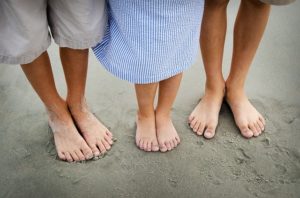
So practicing barefoot whenever we can is a great idea! But there are times when this may not be optimal. Some situations where it may not be a good idea to be barefoot for your qigong practice include:
- When it is too cold. Apart from the obvious discomfort, too much cold causes you to contract the blood vessels, nerves and other tissues in your feet. This restricts the energy flow and means you actually end up with a worse connection to the earth rather than a better one.
- When the ground is polluted. If there may be pathogens or something toxic or potentially harmful in some way on the ground, you want to avoid direct contact with it so that you don’t absorb any of it through your skin.
- When there are sharp things or other things on the ground which could injure your feet. This could be broken glass, or even just sharp stones. Even if these would not cause serious injury, the minor injury of little bruises is not beneficial and will again cause contraction in your feet and reduce your connection to the earth. This will detrimentally affect the natural movement of your feet in your qigong session as they respond to the stimulus of what’s on the ground possibly more than what you are doing in your practice.
- When the ground is too hard. Nature is not made up of concrete slabs, but a lot of our modern environment is. Most natural surfaces have some give or movement in them. Grass, sand, bare dirt, pebbles, all yield at least a little when pressure is put on them. Our feet have not yet adapted to being bare on hard concrete surfaces for long periods of time. That little bit of cushioning we find in natural surfaces lets our feet move more naturally.
So if you have a warm comfortable environment and a surface to practice on that is free of pollution, things that could injure your feet, and is not too hard – then practicing barefoot is probably going to be ideal for you. If your practice space has even one of these factors present, it is probably going to be a better idea to wear some shoes.
Toe shoes
These became a bit of a trend a few years back, and in theory they are great. They articulate each toe of your foot and allow your foot to flex and move naturally in response to the surface you are on and also your own natural movement. They also provide just enough cushioning to let your foot relax and move effectively on hard surfaces like concrete slabs too.
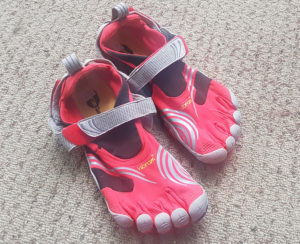
They do have some downsides though… In my experience while the toes are articulated, they don’t really move all that freely within the confines of shoe. At the same time, by being separated from each other, and with reduced sensitivity, the toes are more vulnerable to snagging, bumps, and crushing. Not a major issue, but enough to be annoying. Also the fit of these shoes is very tight and the synthetic materials the shoes are made out of often don’t breathe very well, so your feet can get rather sweaty. They are also kind of a hassle to put on and take off. And finally, these specialty kind of shoes are usually quite expensive.
If you’re curious about this kind of shoe, they are definitely worth trying. You can see some examples on Amazon.com here.
Personally, I have owned several pairs of them over the years, but in the end find them to be more effort than they are worth for me.
Flat thin flexible soles – the best footwear for Qigong
This is what you really want to have for any situation where being barefoot isn’t ideal. The shoes will keep your feet warm, protect them from harmful substances and objects, and cushion them from surfaces which are too hard, while still allowing your weight distribution to be natural and your feet to twist and flex as you move.
There are many different shoes that fit this description. Some ‘special’ ones that have been designed for martial arts, but also some that can be bought in regular stores. The ones I usually buy I get from k-mart for the low price of $3-$10.
Disadvantages of these shoes are that you do lose some sensitivity and movement in your foot, but if the sole is thin and flexible enough this really is minor and won’t impact your qigong negatively. The other disadvantage is that these shoes often have a rubber sole. This does insulate your foot from the ground and reduce your connection to the energy of the earth compared to being barefoot, but it does not cut it off completely, and you will have a better connection with the earth with your feet feeling safe and relaxed inside a shoe like this, than you will if the energy in your feet is contracting due to something harmful about the surface you are standing on.
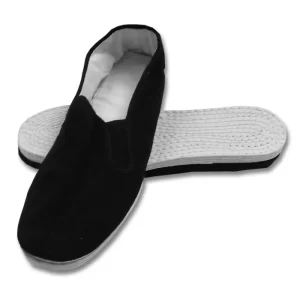
To overcome this weakness of this type of shoe, you can sometimes find shoes that match the description that have leather soles, although often the leather soles start to get a bit too stiff to move freely. There are also special shoes with cotton soles to allow a better energetic connection to the earth. But the soles do wear out rather fast and can be a bit slippery on some surfaces, so I would only suggest you get these if you don’t mind replacing your shoes very frequently. Still, if you want to try them, you can find some here.
What happens when we wear other types of shoes?
Other types of shoe will usually throw the alignment of our body out and interfere with the normal distribution of weight through our feet, or they will restrict the movement of our feet excessively so that they cannot twist and flex easily. Both of these things lead to the energy becoming blocked not just in the feet but elsewhere in the body as well.
Sports Shoes
These are the ones that you will see people wearing most often including sometimes martial arts ‘masters’. After all running shoes and crosstrainers are ‘sports’ shoes, so they must be perfect for moving around and doing martial arts and qigong in right?

The major issue with this type of shoe is that they usually have a sole with a heel that pushes you forwards onto the ball of your foot unnaturally. This causes tension right through the back chain of muscles. Particularly the calves, glutes, and lower back. This will also often lead to a tilt in the pelvis and shortening of the lower back muscles, both of which significantly reduce the flow of energy through the spine and legs… In addition to this, this type of sole usually is quite stiff, restricting movement in the foot, and also leads to instability in the ankles and knees. Really not ideal for qigong practice where we are hoping to stimulate healthy natural energy flow…
There may be some situations where you may still want to wear these shoes for your practice, such as if you have a medical condition where you need this type of shoe to support your feet, or when there are no other shoes available to wear. You will still get benefit from your qigong practice wearing these shoes. They are just suboptimal for the alignment of your body and natural movement of your feet.
Business shoes, High heels, and Work Boots
These all fall into the category of wear them if you have to. If anything they provide a little extra challenge or novelty to your qigong session if you find yourself in a situation where you need to be wearing these as you practice.
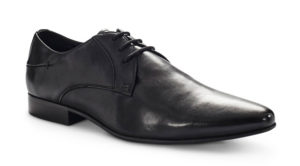
![]()
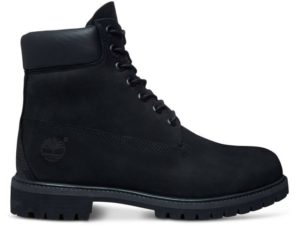
Business shoes normally only have a small rise in the heel, and sometimes the soles aren’t too thick, but they are almost always way to stiff to allow natural movement. High heels, well these push the change in postural alignment to the maximum. Workboots, often but not always, the soles are actually quite flat inside these shoes, there is also often quite a bit of room to move as it is in the best interests of someone doing a hard physical job to have natural alignment and body mechanics. So for some qigong practices they may not be too bad. Their main downfall is that they tend to be quite heavy, so for anything that requires lifting and turning of the feet, this will be a factor.
I hope that you have found this article on footwear for qigong useful. One type of qigong practice where you really notice the influence of your footwear is qigong walking. This is a wonderful, gentle, meditative way to build your awareness of your energy and encourage healthy flow through out your body. If you are interested to learn more about this practice, you can check out the Long White Cloud Qigong courses here.
Yours in Qi!
John Munro
Long White Cloud Qigong
17 Comments. Leave new
Love barefeet the best, but when I have to wear something, I wear flip flops, just so that my soles are protected and everything else is bare.
Yes it is lovely to be bare foot whenever conditions permit 🙂
Do you have any suggestions for practicing with fallen arches (flat feet)?
It may be that you need to practice in a shoe with arch support to begin with. There are some great exercises for restoring the arch in your foot as well though. Perhaps I will put them in another blog post.
I would be interested in learning about some exercises for restoring the arch in your foot as my daughter is flat footed. I think the blog post sounds like a great idea John as I would love to learn more about this subject
Hmmm… ok, I will see when I can fit in writing one on that.
Hi John, I was wondering if the old fashioned pumps would do? They have flat soles and some have laces and others have an elastic on the top of the foot allowing movement. I used to wear them for PE in school.
I am not entirely what kind of shoe you are referring to as old fashioned pumps, but from what you have described they sound like the right kind of shoe. The key things are a flat, reasonable thin, flexible sole, which will allow your foot to move naturally while still having some protection and comfort.
Amazing synergy,if that’s the correct use of the word. I watched the shoe video this morning, ordered the shoes from K Mart. Actually I needed shoes for outside QiGong anyway. Then went to the studio to teach my class. After class someone actually asked me “what are the best shoes for QiGong “. This is a person who has been coming to class for a year. It was this morning she asked that question. Ya gotta love it.
Great timing 😀
We do the Qigong exercises on a yoga mat with bare feet or socks.
That is a nice balance Yvonne 🙂
What about someone who has been toe-walking for 40+ years? Even though I walk barefooted around the house trying to practice barefoot causes my foot and back to cramp. Flat shoes do not work either.
Perhaps you could try gradually reducing the height of the heel of your shoe. Get some shoes that the heel is just a little lower than the ones you currently wear. Once that is comfortable, you could then go a little lower in the heel again. Re-establishing that connection between your heel and the ground will help your feet and back in the long run.
Funnily enough I put down a large natural wool rug on the cold hard concrete deck so I could continue to practice qigong in bare feet. I find it so much better than a yoga mat as my feet glide better! 🙂
I suffer from Cavus feet and tight Achilles’ tendons (especially my left foot). Because of this I have to use Orthotics in shoes/boots in order to move with any kind fluidity. I would love to practice Qigong barefoot but I find many positions near impossible to do properly barefoot.
If you need to wear special footwear to support you specific structure and needs – then that is the right thing to do 🙂